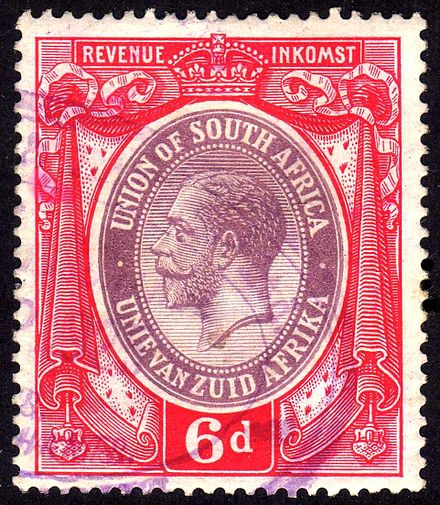
South Africa issued revenue stamps from 1910 to 2009. Apart from national issues various provinces of the country issued revenues from around 1855 to c. 1970.

South Africa issued revenue stamps from 1910 to 2009. Apart from national issues various provinces of the country issued revenues from around 1855 to c. 1970.

Before South Africa was united in 1910, each part of South African issued their own stamps. These were:
After unification, the following provinces had their own issues as well:
The city of Durban also issued municipal revenues from 1957 to around 1970. [1]
The first general purpose South African revenue issue was in 1913. From that year until 1937, all South African revenues featured the profile of King George V, with changes in size and inscriptions. From 1938 to 1952 stamps featured King George VI. The original 1938 issue was reissued in bantam format in 1943, and in 1946 these were replaced by a new design still featuring the King. In 1942, Native Tax stamps were overprinted REVENUE or INKOMSTE. 1954 saw a new design featuring Queen Elizabeth II, but these were quickly replaced by an issue bearing the coat of arms later that year. These were used reissued denominated in rand in 1961, and were replaced by a numeral issue in 1968. These remained in use until a new design, also a numeral, appeared in 1978. These were finally withdrawn in March 2009. [2]
These stamps were used to pay for the fee of more than 10 head of cattle allowed to be grazed on crown land. Only seven stamps were issued between 1913 and 1937. All of these were King George V revenue issues overprinted FEE FOR ADDITIONAL STOCK. There are a number of different types of this overprint.
These were used to pay the annual fee for the inspection of weighing and measuring equipment such as shop scales. Many different stamps were issued between c.1920 and 1956, and all were revenue or postage stamps bisected in two (one half being for the receipt, the other for the audit duplicate), and overprinted ASSIZE(c.1920), ASSIZE IJK(c.1923-c.1930) or ASSIZE YK(c.1930-1956). All of these are very scarce or rare revenue stamps.
Various cigarette excise stamps and labels were issued in South Africa between 1913 and the 1980s. There are dozens of different issues, and many are quite scarce although there are common ones as well.

These stamps were used to pay the fee for visas of foreigners visiting South Africa. Since they were not used for local passports, they are rather elusive. All are revenue or postage stamps overprinted, and they were issued between 1913 and 1980. Until 1968 overprints read CONSULAR KONSULAIR, and from 1969 they read CONSULAR KONSULÊR.
These were used to pay the tax on imported printed matter and were sold from South African consulates abroad. All are overprints on contemporary postage stamps, and there are a variety of different issues. The first issues were overprinted CUSTOMS DUTY from 1913 to 1918. Later stamps were overprinted DOUANE in French, and these were used from 1926 to 1954. Most Customs stamps are quite common, although some of the high values are scarcer.
A two-part stamp featuring a dairy cow was issued around 1930.
Only one stamp was issued for this tax in 1942. It was used to pay the tax on native huts or households in order to encourage employment instead of farming or herding. The stamp saw rather limited use, and was later overprinted for use as regular revenue use. It was also overprinted for use in Basutoland and Bechuanaland.
These stamps were used to pay the penalty fee for late payments of revenue. All are revenue stamps overprinted either by printing or by manuscript. The first 1913 issue consisted of King George V revenues overprinted either PENALTY. or BOETE., and from 1931 stamps were overprinted with these two words together. Manuscript overprints reading Penalty or PENALTY are known from 1920, 1931, 1937, 1938 and 1968. Similar manuscript overprints but in Afrikaans Boete are known from 1984 and 1985. These were withdrawn with the regular revenue issues in 2009.
Each of the four independent Bantustans issued their own revenue stamps. Most are commonly found mint, but are scarce used. [3]
Bophuthatswana's only revenue stamps were issued around 1988. The set consisted of twelve stamps ranging from 2c to R100 bearing the coat of arms and inscribed in Tswana (LOTSENO), Afrikaans (INKOMSTE) and English (REVENUE).
Ciskei's only revenue stamps were issued in c.1988. The set consisted of ten stamps ranging from 3c to R100 bearing the coat of arms and inscribed in Xhosa (INGENISO) and English (REVENUE). Five values from 5c to R10 were also issued overprinted ISOHLWAYO/PENALTY in black or red, for use as penalty stamps.
Transkei's only revenue stamps were issued around 1988. The set consisted of fourteen stamps ranging from 2c to R50 bearing the coat of arms superimposed on the national flag and inscribed in Xhosa (INGENISO) and English (REVENUE). Seven values from 5c to R10 were also issued overprinted ISOHLWAYO/PENALTY in red, for use as penalty stamps.
Venda's only revenue stamps were also issued in c.1988. The set consisted of seven stamps ranging from 5c to R50 bearing the coat of arms in a similar format to Transkei's issue and inscribed in Venda (MBULLO) and English (REVENUE). Six values from 5c to R10 were also issued overprinted NDATISO/PENALTY in red, for use as penalty stamps.
South African revenues were overprinted for use in a number of other parts of southern Africa. These were:

Revenue stamps of Malta were first issued in 1899, when the islands were a British colony. From that year to 1912, all revenue issues were postage stamps overprinted accordingly, that was either done locally or by De La Rue in London. Postage stamps also became valid for fiscal use in 1913, so no new revenues were issued until 1926–30, when a series of key type stamps depicting King George V were issued. These exist unappropriated for use as general-duty revenues, or with additional inscriptions indicating a specific use; Applications, Contracts, Registers or Stocks & Shares. The only other revenues after this series were £1 stamps depicting George VI and Elizabeth II. Postage stamps remained valid for fiscal use until at least the 1980s.

Revenue stamps of the United Kingdom refer to the various revenue or fiscal stamps, whether adhesive, directly embossed or otherwise, which were issued by and used in the Kingdom of England, the Kingdom of Great Britain, the United Kingdom of Great Britain and Ireland and the United Kingdom of Great Britain and Northern Ireland, from the late 17th century to the present day.
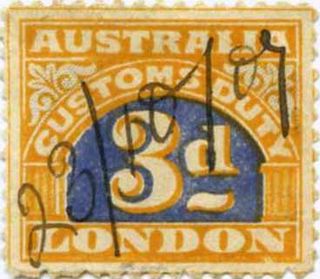
Australia issued revenue stamps from 1907 to 1994. There were various types for different taxes. In addition to Commonwealth issues, the states of New South Wales, Queensland, South Australia, Tasmania, Victoria and Western Australia as well as the territories Australian Capital Territory, North Australia and Northern Territory also had their own stamps.

Pakistan first issued revenue stamps when it became independent in 1947 and continues to issue revenues to this day. In addition to national issues, the provinces of Balochistan, North West Frontier, Punjab, Sindh, as well as Azad Jammu and Kashmir, West Pakistan and the capital Islamabad also have or had their own stamps.
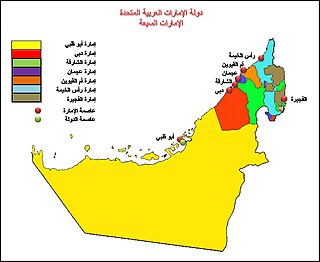
The United Arab Emirates, formerly known as Trucial States, first issued revenue stamps in 1948 and continues to do so to this day. In addition, the emirates of Abu Dhabi and Dubai also had their own separate revenue issues.

The island of Cyprus first issued revenue stamps in 1878 and continues to do so to this day. The Turkish Republic of Northern Cyprus also issues its own revenue stamps.

Eritrea first issued revenue stamps under the Italian Eritrea administration. It continued to issue revenues under British and Ethiopian occupation, as well as when it became an independent state. The capital Asmara also issued some revenues.
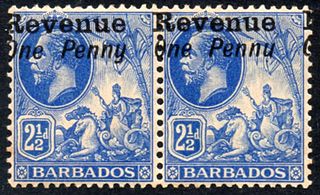
The island of Barbados first issued revenue stamps in 1916. There were various types of fiscal stamps for different taxes.

Basutoland, now known as Lesotho, first issued revenue stamps in 1900 and continues to do so.
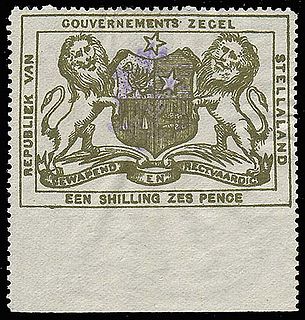
Bechuanaland first issued revenue stamps as Stellaland in 1884. Note: this information is wrong. Bechuanaland was split into British Bechuanaland and the Bechuanaland Protectorate. British Bechuanaland was added to the Cape Colony and the Bechuanaland Protectorate was governed from Mafeking until the seat of government was moved to Gaberone.

Libya first issued revenue stamps when it was an Italian colony in 1913 and continues to do so to this day. The provinces of Cyrenaica, Tripolitania and Fezzan as well as the municipality of Tripoli also had separate revenue issues until the 1950s and 1960s.

The South African Republic (ZAR), later known as Transvaal issued revenue stamps from 1875 to around 1950. There were a number of different stamps for several taxes.
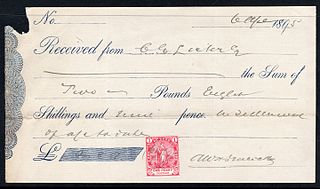
Cape of Good Hope issued revenue stamps from 1864 to 1961. There were a number of different stamps for several taxes.

Kenya, formerly known as British East Africa issued revenue stamps since 1891. There were numerous types of revenue stamps for a variety of taxes and fees. Also valid for fiscal use in Kenya were postage stamps issued by the following entities:

Nyasaland, now known as Malawi, first issued revenue stamps as British Central Africa in 1891 and continued to do so until the late 1980s.

Rhodesia, now divided between Zambia and Zimbabwe, first issued revenue stamps in 1890, and Zimbabwe continues to do so to this day.

Revenue stamps of Jamaica were first issued in 1855. There were various types of fiscal stamps for different taxes.

Malaysia first issued revenue stamps as the Straits Settlements in 1863, and continues to do so to this day. Over the years, a number of entities in modern Malaysia have issued revenue stamps.

Uganda issued revenue stamps from around 1896 to the 1990s. There were numerous types of revenue stamps for a variety of taxes and fees.
Revenue stamps of Seychelles were first issued in 1893, when the islands were a dependency of the British Crown Colony of Mauritius. The first stamps were Mauritius Internal Revenue stamps depicting Queen Victoria overprinted for use in Seychelles, and Bill stamps were also similarly overprinted. Postage stamps depicting Victoria or Edward VII were overprinted for fiscal use at various points between 1894 and 1904, while surcharges on Bill stamps were made in around 1897–98.
| Wikimedia Commons has media related to Revenue stamps of South Africa . |